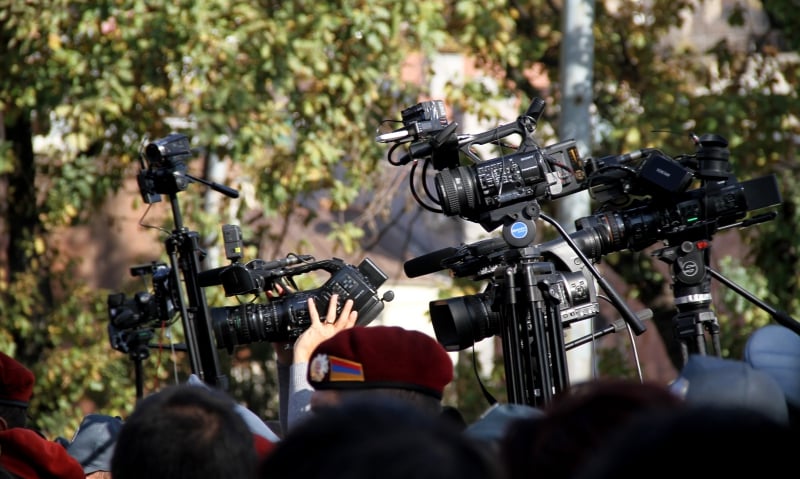
Incidents of pressure applied on media outlets and their employees sharply increased last year. According to the 2017 report of the Committee to Protect Freedom of Expression (CPFE), compared to 52 cases in 2016, there were 113 cases of journalists being pressured in 2017.
According to the report, violations of the rights to receive and impart information also practically doubled: 33 in 2016 to 62 in 2017.
The number of incidents of physical violence against journalists remained almost unchanged.
“2017 was quite a stressful year for news outlets due to National Assembly, Yerevan City Council, and local self-government elections. Usually around these times violence and various types of pressure against journalists increase,” says CPFE President Ashot Meliqyan.
Of the 29 cases registered during the election periods, criminal cases were launched for only 7 of them, of which 5 were dropped due to the absence of corpus delicti. Two of the cases are in court.
According to Meliqyan, the ruling authorities don’t follow through to examine these cases and don’t take them seriously; meanwhile, the violations are concerning. “If they don’t proceed on these cases, well for what cases should there be criminal liability?”
Cases in Armenia and International Courts
In 2017, there were 60 court cases involving media outlets and journalists (30 had to do with the sut.am case).
Ara Ghazaryan, an attorney who specializes in media issues, says that from 2008 to date, 120 recorded incidents of obstructing journalists’ activities are intentionally not being examined: “This means there’s a problem at the preliminary investigation stage.”
Cases in international courts with complaints from journalists in Armenia have now been given new life: the UN Human Rights Committee has circulated the Electric Yerevan cases of Gevorg Ghazaryan and Hakob Karapetyan, and the European Court of Human Rights, Tehmine Yenoqyan’s case.
Speaking about the cases examined in Armenia, attorney Davit Asatryan says that it can take up to 30 months to examine a case in Armenian courts, during which time the public forgets about the incident.
“So the ruling doesn’t get the public reaction it might’ve if the case was examined over three or four months. Short timeframes must be set to make journalists’ voices heard in court,” adds Asatryan.
Contrary to the attorneys and the report’s findings, General Prosecutor’s Media Relations Adviser Gor Abrahamyan says that in 2017, six criminal cases were filed with the Special Investigation Service: one of which already has received a ruling, three were dropped due to the absence of complaints, and two are in process. As a result, four police officers were charged.
“I don’t agree that the authorities don’t bear responsibility for these cases. More than 60 police employees were interrogated in the cases filed; the lawfulness of their actions is still under consideration,” Abrahamyan adds.
Gayane Asryan


Add new comment
Comments by Media.am readers become public after moderation. We urge our readers not to leave anonymous comments. It’s always nice to know with whom one is speaking.
We do not publish comments that contain profanities, non-normative lexicon, personal attacks or threats. We do not publish comments that spread hate.